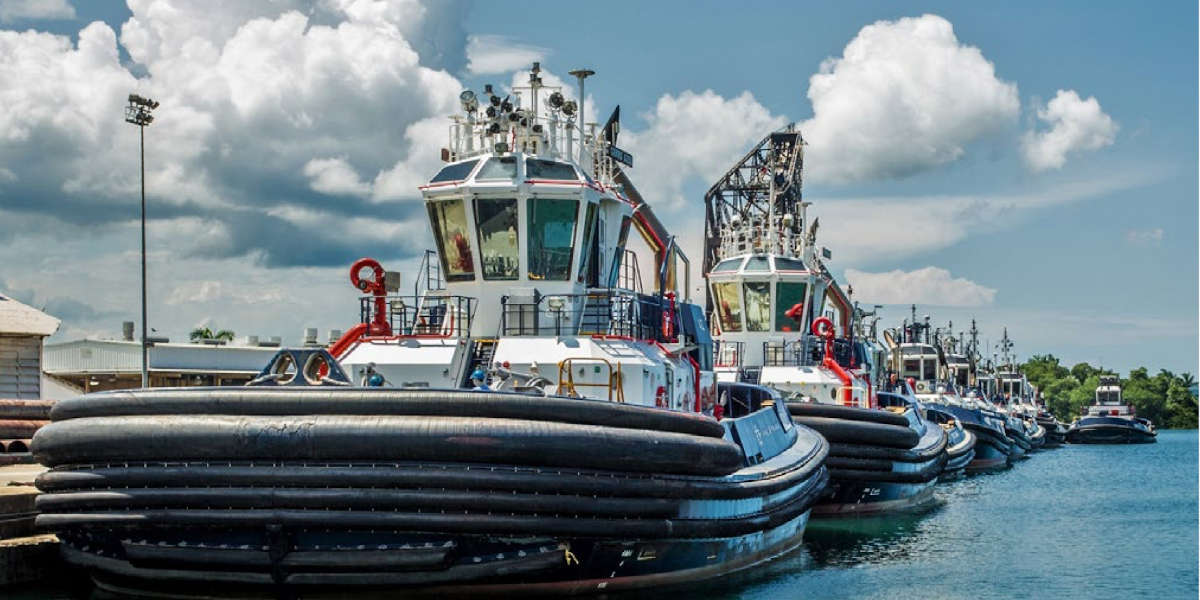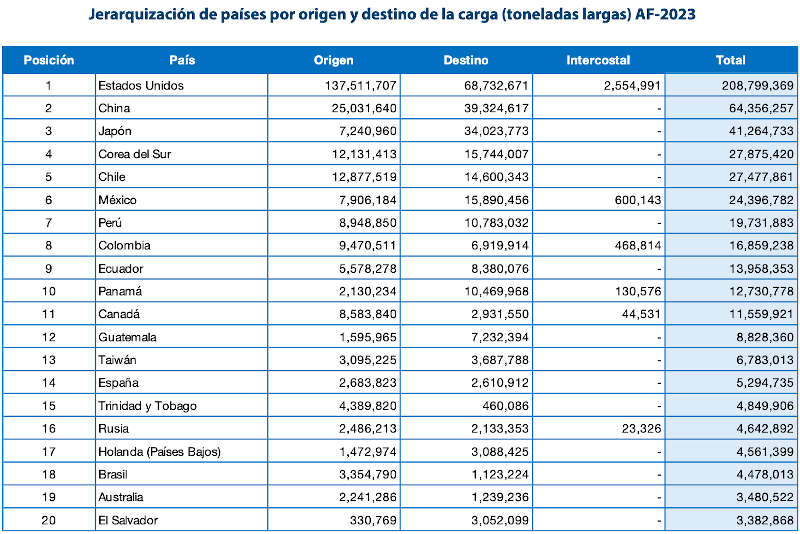In the picture
Panama Canal Tugboats [Panama Canal Authority].
B In the second half of the year, the drought during most of 2023 forced a reduction of issue of ships and Issue of cargo that could navigate through the Panama Canal. Improved rainfall has allowed some traffic to recover in recent months. However, the fear of climate change reproducing episodes of this subject is leading the Canal Authority to study ways to increase the flow and thus ensure a flow that accounts for about 5% of international maritime trade.
A drought driven by the El Niño meteorological phenomenon has reduced water in the Panama Canal, causing lengthy and costly disruptions to international trade and supply chains. In its report 2022 World Trade Outlook, the WHO warned that "climate change is transforming countries' economic and trade futures and poses a serious threat to future growth and prosperity". Although a recent study insists on attributing the shortage of water flow in the Canal to El Niño, the Panamanian authorities are now forced to examine scenarios that climate change may cause.
Maritime transport, which accounts for 80% of world trade Issue , is particularly vulnerable and highly exposed to the effects of climate change. The status in Panama comes on top of other geopolitical crises, such as the one in the Red Sea, where Houthi rebels are attacking vessels attempting to cross the Bab-el-Mandeb Strait. The fragility of the maritime transport system underscores the need for adaptive and sustainable measures to ensure the continuity of world trade in a context marked by climate uncertainty.
The year 2023 was the second driest year in the history of the Panama Canal watershed, whose locks discharge some 200 million liters of fresh water into the sea for each transiting vessel. To cope with the effects of the drought, the Panama Canal Authority (ACP) has been imposing restrictions over the past year on the draft of ships and, consequently, on the amount of cargo they can carry. In addition, it has reduced the issue number of ships that can transit daily. From an average of between 36 and 38 vessels in normal situations, in August it dropped to 32 and then the figure continued to decrease. October was the month with the least rainfall in the history of the Canal, so it was then decided that the following months would further reduce traffic: only 24 ships in November and 22 in December. The improvement in rainfall made it possible that at the beginning of 2024 the decline did not continue, but in January the quota was raised to 24, in April it was at 27 and it has been announced that in June it will increase to 32, with an increase also in draft. The loss of revenue in the current fiscal year (October 2023 to September 2024) due to the restrictions is currently estimated to be between $500 million and $700 million, higher than the $200 million projected in August.
The water that supplies the 80 kilometers of the road comes from two artificial lakes, the Alhajuela and the Gatun. The total capacity of both reservoirs is 1,857 cubic hectometers (hm3), of which 558 hm3 correspond to the Alhajuela and 1,299 hm3 to the Gatun. However, in 2023 only approximately 900 hm3 of water was stored due to the prolongation of the dry season. The last rainy season in Panama, which usually occurs between May and November, registered a deficit of 30% with respect to the historical average. In the month of October, it rained 41% less than the usual average, which placed the water level of the Gatun reservoir at 24.30 meters above sea level, compared to the 26.82 meters level expected for that date.
The alternatives to increase the level of the reservoirs are limited, since the drinking water that supplies more than 50% of the country's population is extracted from them. The main solution proposal consists of damming the Indio River, to the west of Gatun Lake, and then drilling a tunnel through the mountain and driving the water eight kilometers to the main reservoir, affecting some 2,500 people living in the area. The project of the reservoir could allow between 12 and 15 additional daily transits, but would cost some $900 million and would take at least six years to build and fill. In addition, the initiative would require a modification of Law No. 28 of 2006, which prohibits the Canal from building new reservoirs. board Although the Canal's board of directors sent a proposal to the Executive in September requesting the pertinent legislative changes, to date there has been no response. The issue is intertwined with an ongoing election year, making it difficult to prioritize and advance the project water project.


